YouTube: The Good, The Bad and The Ugly
For the past eighteen years, I have been posting content on the video platform that changed the world.
YouTube facts
YouTube has around 2.6 billion monthly active users in over 100 countries.
YouTube is accessible worldwide, in over 80 languages, but banned in China, North Korea, Iran, Eritrea, and Turkmenistan.
Visitors spend an average of 19 minutes per day on YouTube.
YouTube is the world's second most visited website, after Google.
Mobile users comprise 89.5% of worldwide visits to YouTube.
Music videos are the most popular content on YouTube.
About 2,500 new videos, totaling 183 hours, are uploaded to YouTube every minute. That’s 150,000 new videos every hour.
There are at least 800 million videos on YouTube, possibly more, with constant uploads making it hard to quantify.
I have posted over 2500 videos on YouTube in the past eighteen years. Most are under ten minutes, either performances, interviews, workshops, just about anything to do with jazz. No recipes though or makeup tips. Nothing about style or ways to get rich. I’m hardly an influencer. Nevertheless, my videos have fifty million views.
Don't let these figures astonish you. There's a stark reality for web video creators concerning YouTube and web video: only twenty percent of viewers stay tuned till the end of a video. Additionally, the majority of viewers engage in other activities while watching: sending emails or texts, cycling on a stationary bike, working on homework, preparing meals, pleasuring themselves — the possibilities are endless. This is a multi-tasking world.
Content Overload?
YouTube is oversaturated with content, a deliberate strategy by its creators who realized they couldn't match traditional media in content production. Instead, they envisioned a platform where the content is user-generated and shared. Coinciding with YouTube's rise to global prominence was the advent of the smartphone, turning every phone user into a potential video producer and heralding a new era of content creation. In a time when Hollywood reigned supreme, the notion that every member of their audience could also become a filmmaker was unfathomable. Now, videos shot on mobile phones are the lifeblood of platforms like YouTube and TikTok. The quality of these videos is varied, yet today's high-definition smartphones, coupled with sophisticated video editing tools, empower users to create content that rivals professional standards.
The most popular types of videos on YouTube can vary widely, but the big numbers come from: music videos, video blogs, gaming videos, explainer and how to videos, product reviews unboxing videos, beauty and fashion, kid’s content, comedy and entertainment, travel, beauty and fashion, and, fitness and health. These categories reflect broad trends, and, the appeal of different types of content to a diverse global audience. The popularity of specific video types can fluctuate based on trends, current events, and changes in user preferences.
The Copyright Blues
From day one on YouTube, back in 2005, users have shared their favorite content from recordings, tv shows and movies on YouTube. In the early days of YouTube, before tv networks, movie studios and record companies discovered the power of YouTube promotion, copyright issues were front and center. To resolve those issues, YouTube developed a revenue sharing system where the big media entities and little ole creators like me, share in the revenue from the ads. Yes, content creators and artists do get a piece of the pie but the content and rights that ASCAP, BMI, Universal, Comcast, Disney, etc., control, dwarfs other content.
To earn $1,000 from a YouTube video, an artist must accumulate approximately 1.5 million streams. This situation overshadows the unfair practices of traditional record labels, as it is now YouTube that seems to be taking advantage of artists. Then there's the whole high-tech carnival, where tech bros are parading around with their glittering gadgets and gizmos, preaching salvation while their pockets bulge with cash. Facebook and the digital wizard Mark Zuckerberg – are they the heroes they claim to be, or just another act in this techno-freak show? Social media, this great connector, might just be the pied piper leading us all into a maze of mirrors, each reflection more distorted than the last.
Like traditional television, YouTube is advertiser driven
YouTube’s business model focuses on keeping users engaged as long as possible so they consume as more ads. The YouTube algorithm keeps changing because there are billions of dollars at stake here. Those changes are eventually, what led me to stop posting new content to YouTube.
YouTube and its parent company, Google, are engineered-driven, harnessing technology as the backbone for success. YouTube operates under intense scrutiny, with an array of tracking statistics and algorithms meticulously analyzing every aspect of the platform. This technical focus makes content creators feel impersonal and rigid, where monetary value often dictates the platform's priorities.
High-profile creators like Taylor Swift receive notable attention, while others, even with substantial followings like the Jazz Video Guy, are largely overlooked. Whenever I’ve tried to get some help from YouTube, I feel as I’m a Jew in a concentration camp asking for a drink of water.
The platform's dynamics have notably shifted over the years. My videos, once prominently featured in search results and recommended sections, now struggle to achieve the viewership they once did, reflecting YouTube's evolving content strategy. And in my case, an aging audience. My viewers are mostly over fifty, and their ranks are slowing diminishing.
TikTok changes the world. Who knew?
In the past year and a half, YouTube has undergone significant changes, influenced by the rise of TikTok, the American subsidiary of a Chinese-based company. TikTok's meteoric success is multifaceted. The platform excels in quickly adapting to user preferences, offering personalized content that keeps users deeply engaged. TikTok caters to the modern audience's shrinking attention span with its concise, bite-sized videos, particularly appealing to younger, mobile-savvy users. It’s intuitive design simplifies content creation and sharing, spurring a culture of viral trends and challenges. The app also provides accessible tools and filters, enabling easy content creation, further boosted by early adoption by influencers and celebrities.
There has been talk in the halls of Congress about banning TikTok in the US because of privacy issues and concerns about how the Chinese government has access to the personal data of millions of Americans.
Sorry, there is no more privacy. Credit card and banking information and God knows what else, can easily be found on the Dark Web, an alternative to the internet you known and love, with the use of the brower, Tor. The gathering of this personal information typically happens through illegal activities such as data breaches, hacking, phishing scams, or other forms of cybercrime.
The Impossible Dream? Finding content on YouTube.
YouTube's content discovery process, primarily driven by its sophisticated algorithms, presents a significant challenge for many users. While these algorithms are designed to tailor content suggestions based on user preferences and viewing history, they often fall short in encompassing the full spectrum of a user's diverse interests.
This limitation becomes apparent when users seek content outside their usual viewing patterns. The platform's reliance on algorithmic suggestions means that less mainstream or niche content can be harder to find, buried under the more popular or trending videos. As a result, users are frequently presented with a narrow, somewhat repetitive range of content, which might not fully represent their varied interests or curiosity.
Don’t Worship Algorithmic Gods
YouTube’s algorithmic approach can create an echo chamber effect, where users are continually exposed to similar types of content, reinforcing their existing preferences and viewpoints. This effect limits the exposure to new and different types of content, which is essential for broadening perspectives and discovering new interests.
As YouTube continues to grow its content library, the sheer volume of available videos exacerbates this issue. Users are often overwhelmed by the vast array of choices, yet find themselves restricted by the algorithm's narrow focus. This paradox of choice, where having too many options can lead to a kind of decision paralysis, is a common experience for YouTube viewers trying to navigate through the platform's extensive offerings.
Addressing this issue requires a concerted effort from both the platform and the users. YouTube could refine its algorithms to better understand and cater to the multifaceted interests of its audience. This improvement might include offering more varied suggestions and making it easier to explore different genres or categories of content. From the user's standpoint, actively seeking out diverse content, using specific search terms, and exploring different channels and creators can help mitigate the limitations of the algorithm.
However, these measures can be time-consuming and may not always yield desired results, particularly for those with limited time or understanding of how to effectively navigate the platform. The challenge remains to balance the convenience of algorithm-driven content discovery with the need for a more comprehensive and inclusive approach that truly reflects the diverse interests of YouTube's global audience.
With the overnight success of TikTok, YouTube and Facebook have responded with their own versions of short video formats, YouTube shorts and Facebook reels, attempting to emulate TikTok's successful model. And both sites have fine tuned their algorithms to serve more short video content.
Despite these developments, YouTube remains a significant venue, especially for long-form content creators seeking monetization and a platform that enables them to reach an audience. Facebook, isn’t really a player in the all important daily video views sweepstakes, compared to TikTok and YouTube.
Short Videos Foster Shorter Attention Spans
The growing popularity of short videos is significantly impacting audience attention spans. This trend reflects a broader cultural shift towards quick, instantly gratifying content, which caters to and reinforces shorter attention spans. As users increasingly consume these bite-sized videos, their ability and willingness to engage with longer, more in-depth content diminishes. This is evident not just in online video consumption, but in other areas as well, such as reading. The decline in the popularity of book reading, especially among younger generations, can be attributed to this trend. The instant satisfaction provided by short videos contrasts sharply with the slower, more immersive experience of reading a book, making the latter less appealing to those accustomed to quick digital content.
This shift in content consumption has broader implications for how information is processed and understood. The preference for short-form content often means that complex ideas and narratives are simplified or fragmented, potentially leading to a superficial understanding of important topics.
This change can affect critical thinking and attention to detail, as audiences become more accustomed to skimming through information rather than engaging deeply with it. The decline in longer forms of engagement might also impact creativity and imagination, which are often fostered by activities like reading or watching longer pieces of content that require sustained attention and thought.
Tackling this evolving trend proves to be a complex task, influenced by technological advancements and shifts in cultural behaviors, particularly with revenue being a crucial factor. To adapt, content creators and platforms might have to creatively reinvent longer-form content, making it more captivating for viewers who are now more inclined towards brief video formats. The impending wave of immersive virtual reality holds promise as the next frontier for extended content, offering an interactive realm where the audience is not just an observer but an active participant. Education systems might also play a role in encouraging deeper engagement with content, teaching skills like critical thinking and sustained focus.
But let me tell you, buckling this runaway train of a trend, given its sprawling roots and the blistering speed of tech's march that's reshaping our binge habits, is like wrestling a thunderstorm. As digital media morphs at warp speed, the real trick, the high-wire act, will be juggling what the screen zombies crave and coaxing them to dive deeper into the content sea. However, reversing or even significantly impacting this trend is a daunting task, given its widespread nature and the rapid pace of technological advancement that continues to shape content consumption habits. As digital media continues to evolve, finding a balance between catering to current user behaviors and promoting more in-depth engagement with content will be crucial.


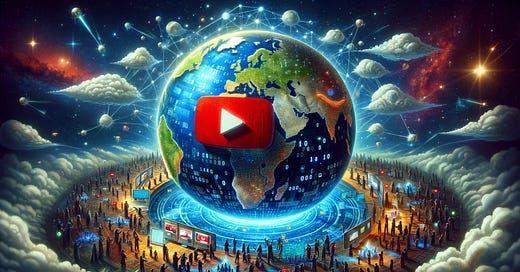




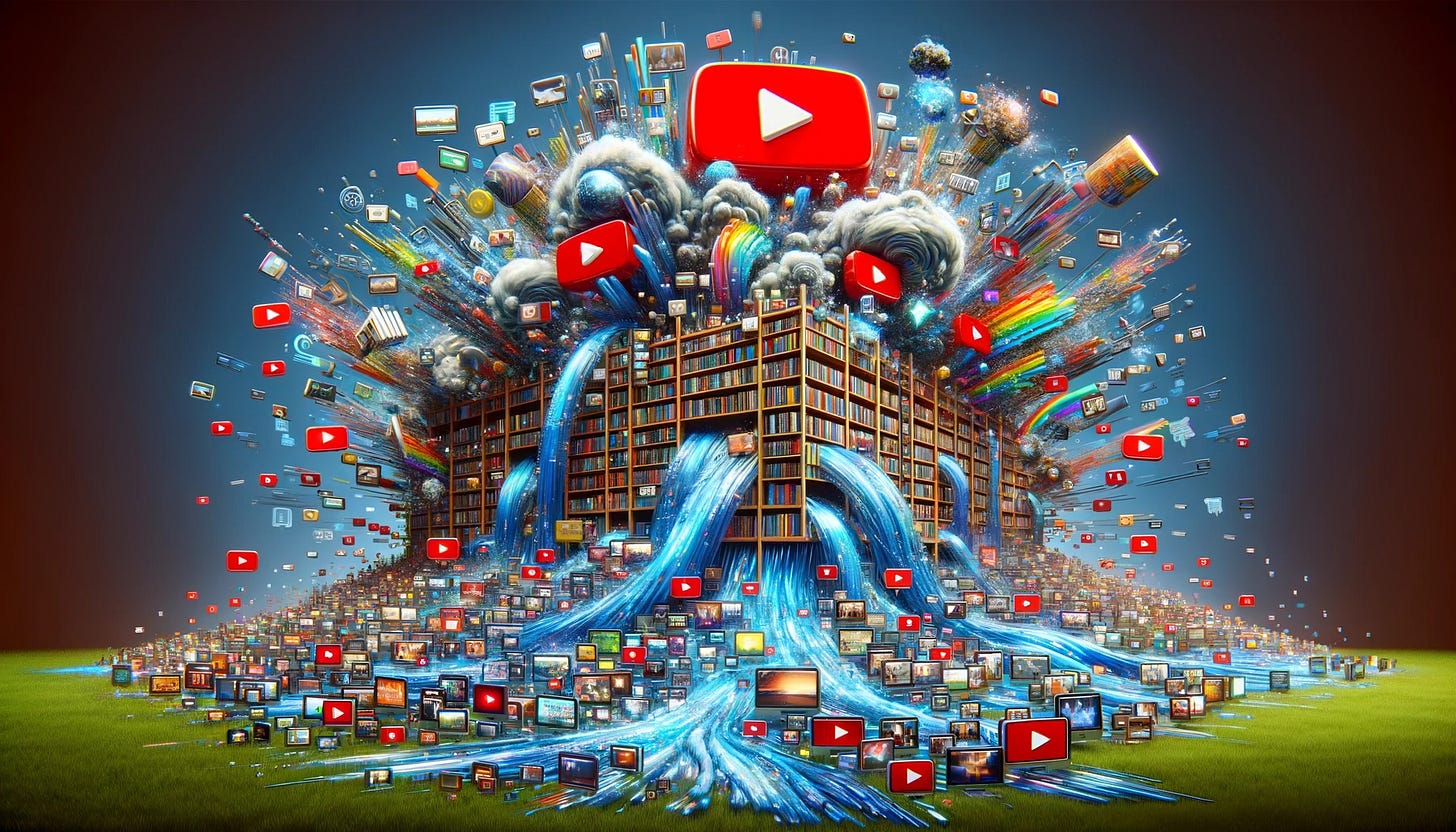
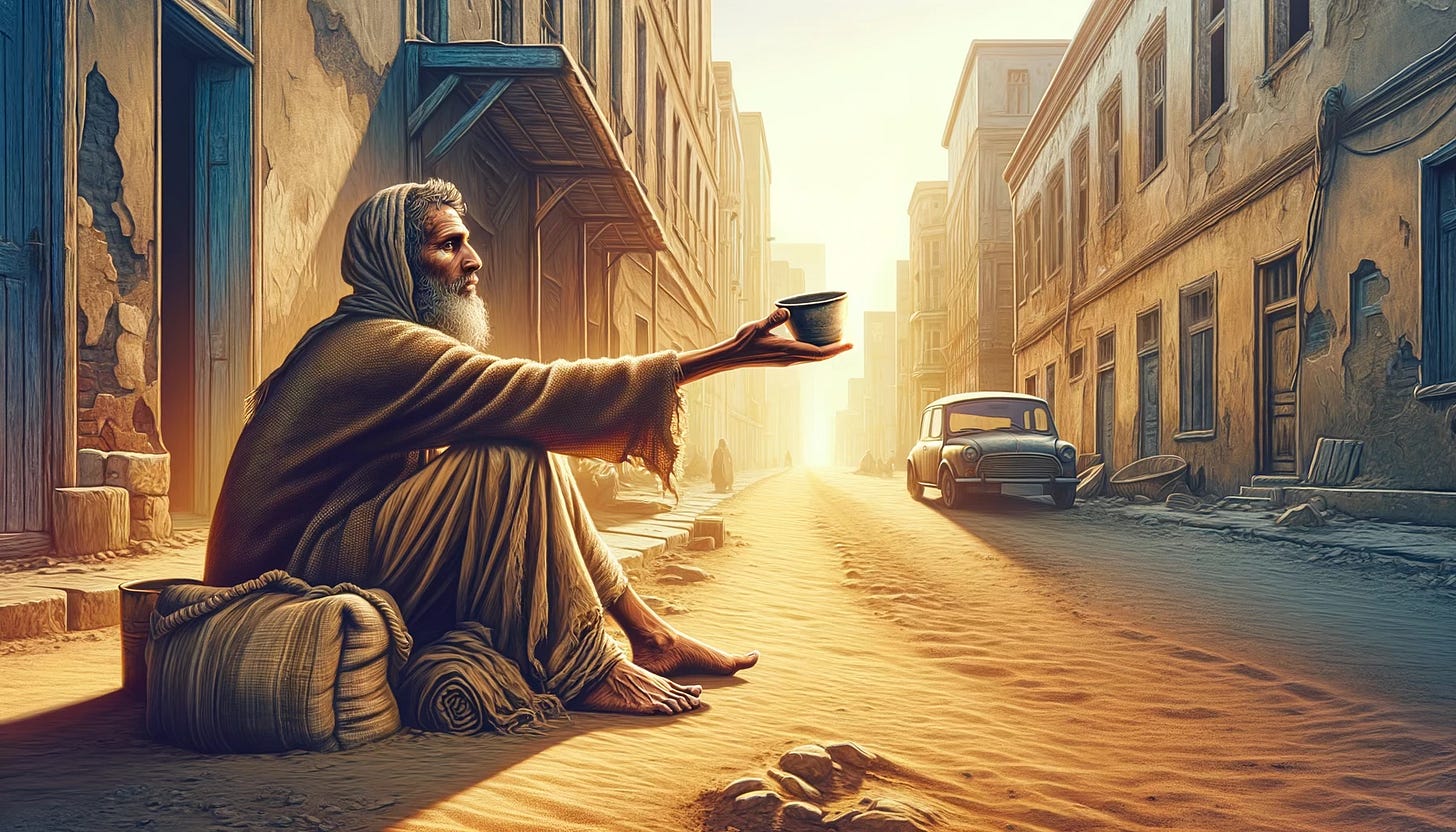
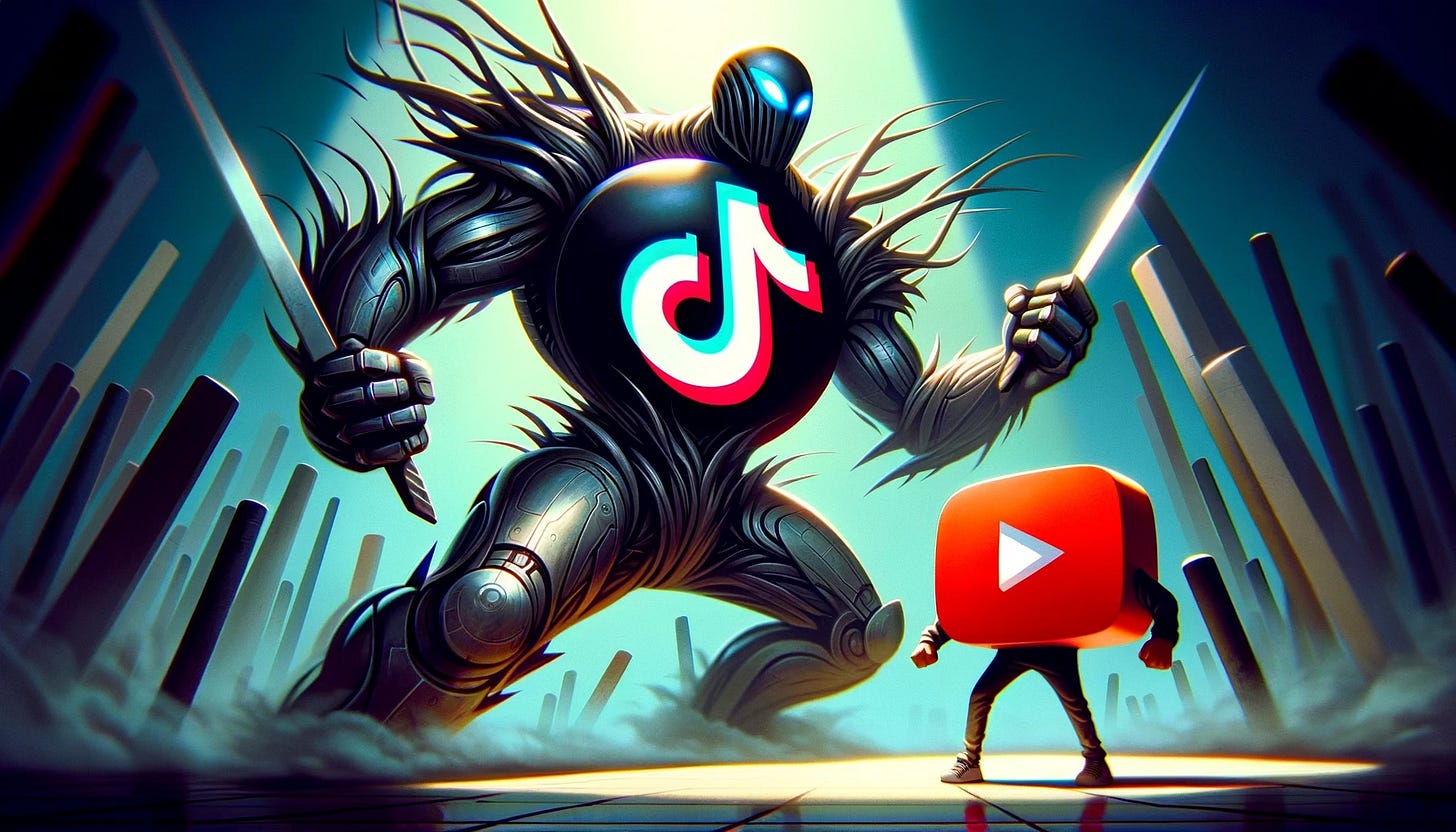

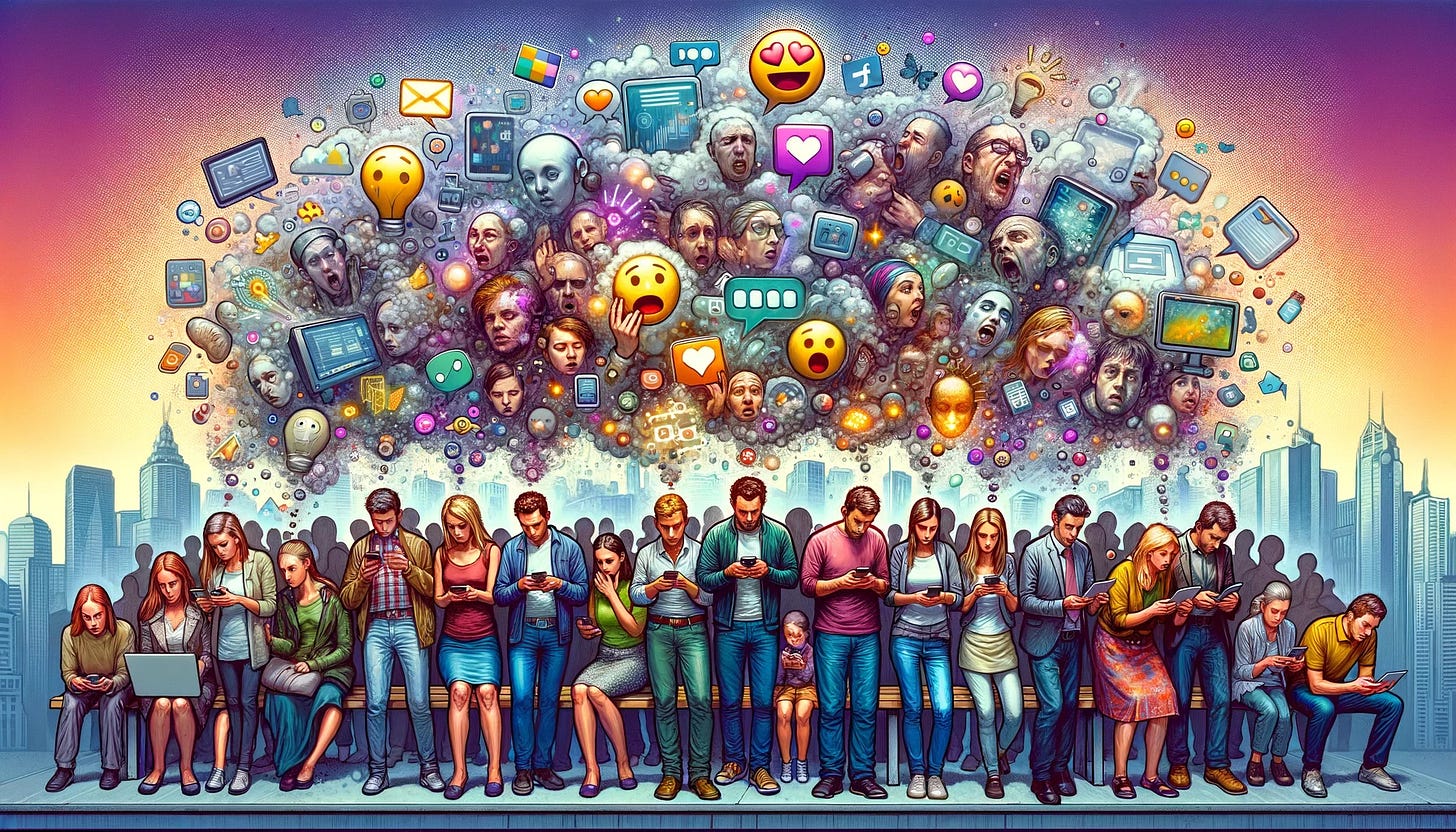
There must be more people like me, who never buy anything that's advertised. Are there enough people who are duped into buying what the see that the advertisers think it's worthwhile to pay for ads on youtube? I guess there must be. It's reall tiresome so look for a pancake recipe and forever after be fed pancake recipes every day forever. Clicking on don't show this channel again doesn't really help as there are dozens more just like them. I've reduced my youtube use to about once or twice a week and only for specific content. AT thi point in my life I'm not concerned about missing anything. None of it realy matters. As long as there are books available I'm fine.
Bret, Both your writing and your content is superb. Both insightful commentary on jazz as well as the social changes we all face! Substack can also become overwhelming because you subscribe to a blog here and a blog there, and before you know it, in a week, your mailbox is filled with stuff you don't have time to read. However, Syncopated Justice is fast becoming one of my favorite reads because of the quality of the information and your writing style.
Youtube ads have become intolerable especially for music connoisseurs who enjoy "high information music" a term coined by Rick Beato. Ads interrupting a long form solo or a great symphony is disgraceful. I'm old school. Still have an Am/FM radio and miss playing my jazz on old technology. I'm unfamiliar with all the alternative venue's to listen to music but it's time I started looking and wipe off the dust on my old IPOD.
I value my time and attention. Time is so fleeting that taking control of ones time is absolutely necessary in today's world with all the distractions. My assertion is the Digital Age has brought in with it an age of decadence and narcissism. An age where the masses indulge in excessive, often conspicuous, consumption. An absurdly wealthy elite emerges, but instead of repelling the masses it is admired and celebrated. At this point in the life cycle of an empire frivolity, as Glubb calls it, comes to the fore. In order to distract people from what’s really going on, the economy creates diversions. Enter social media. Voyeurism becomes central to culture: the gladiatorial spectacles in decadent Rome are mirrored in today’s ‘reality’ television. People become fixated on celebrity-ism as the genuinely noteworthy become understandably camera shy. These invented celebrities are ‘famous’ just for being famous. In every era the obsession with celebrity glorifies many of the same professions. the final decades of their own empires, the Romans, the Ottomans and the Spanish all made celebrities of their chefs. Sound familiar? Debauchery is another recurring theme at the end of empire. Society develops a strangely immature obsession with sex.
While I do not watch tic tok, my youtube feed is filled with "normies" striving for fame for some achievement. Entire channels dedicated to watching people eat their favorite foods. Eating pasta in Italy, fast food in America, or making their favorite food bombs and showing it off as if they are clever. Here a daughter films her Korean mother and father eating every cuisine imaginable. He says a few cute words, she makes and sells t shirts, now mom and dad are famous. For what?? Eating. https://youtu.be/4iUIMOI-fQg?si=-d34Dqu4VdaBh-RI. Click on one and then you are fed a constant supply of young people who are dedicated to one thing and one thing only....Eating!! https://youtube.com/shorts/Q3hDiED6WI0?si=nuUR-C0TJl45AIia What's the point? We went from celebrity chef's, down to consumption.
The trend I'm still attempting to figure out are music reaction video's. That's different from critical commentary on music which has become a thing by musicians who are doing more commentary than they are making music. But at least you gain insight. What I'm talking about is the constant supply of ordinary people with a pair of headphones bopping their heads up and town, listening to music of the last 40 years and saying, wow...that band was good. Sure. Nice guy, Good humor but why am I going to watch people listening to music? What exactly is their expertise that I am going to spend time watching people listen to music? https://youtu.be/sIMAtbHlkFI?si=_1TK1E2KPwbVDfxf Used to be the saying, people who can do, those who can't "teach" That might be a little unfair to dedicated teachers. I'm willing to throw out and replace it with "those who can, do, those who can't make crappy youtube channels. I'm feeling a Thoreau moment "“The mass of men lead lives of quiet desperation. What is called resignation is confirmed desperation." Instead of moving to the city with their minks, now, they create a youtube or tic tok video.
Then the people who actually work hard, make thoughtful commentary get screwed. And then they break the commentary up with commercials of guys promising to make a million dollars trading the stock market with their secret AI produced algorithms or I can learn how to play the piano in three easy lessons for $99.00.
I've decided to take a stand. I control what comes in, and do not let the algo's decide how I'm going to spend my time. I seek out the content that nourishes me and throw out the rest. "I wished to live deliberately, to front only the essential facts of life, and see if I could not learn what it had to teach"